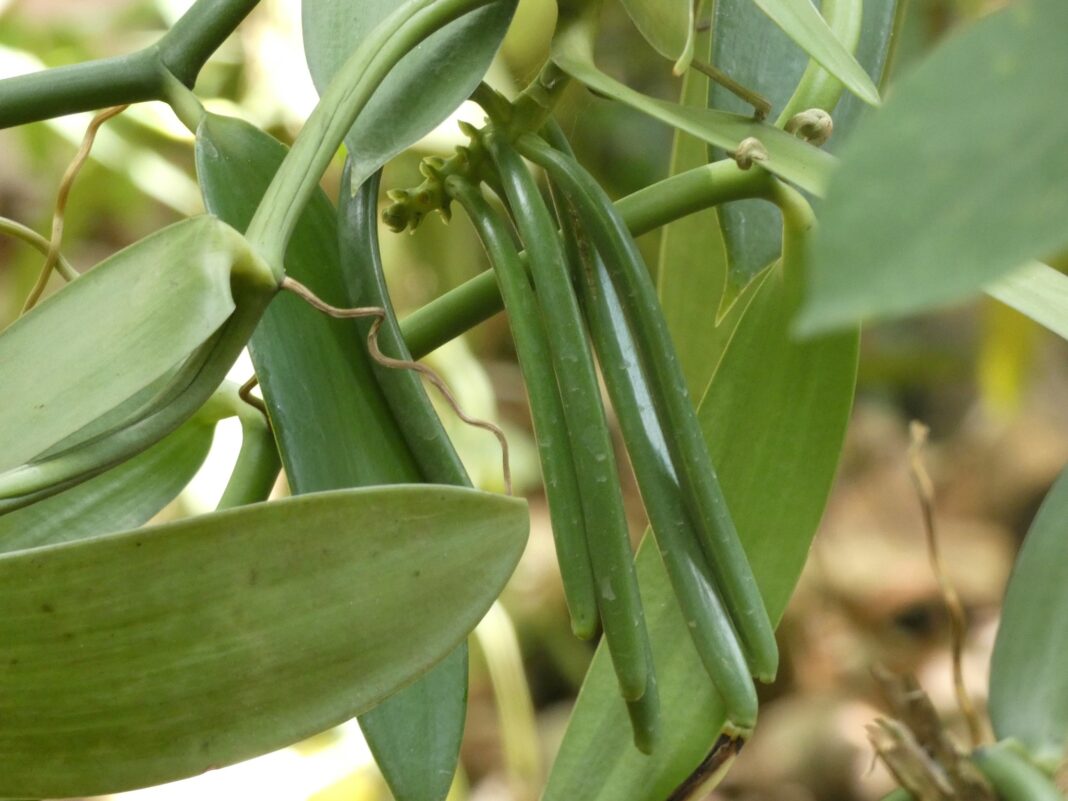A few months ago, I was contacted by Bridget Farrell, founder of Bullaun Press, an Irish publisher dedicated to translations. Would I be interested in reading an advance copy of The Rarest Fruit, translated by Karen Fleetwood and Laëtitia Saint-Loubert, the second novel they were publishing by Gaëlle Bélem and also the second novel by a writer from Réunion ever to make it into English? Since then, the first, There’s a Monster Behind the Door, also translated by Fleetwood and Saint-Loubert, has been longlisted for the International Booker Prize. To my mind, The Rarest Fruit, which comes out in the UK and Ireland later this week, easily maintains this standard.
Based on the true story of Edmond Albius – an orphan slave raised by Ferréol Beaumont, a white botanist on Bourbon Island, as Réunion was known until 1848 – the novel explores appropriation and the injustices embedded in the economic forces that govern international trade to this day. When Edmond unlocks the secret to the pollination of vanilla, the consequences ripple out around the world, changing the Western palate and enriching many of those engaged in the commodity’s exploitation. But for its bright young discoverer, who harbours ambitions ‘to become the first Black botanist in this world of Rich Whites’ but ‘doesn’t have the right colour skin to have callings’, the repercussions are much darker and more painful, bringing him up against the systemic injustices and human cruelty that robbed him of his natural parents in the first place.
Rhetoric and rhythms are at the heart of Bélem’s craft. She wields repetition with a barrister’s flair, driving home the force of what she’s presenting and, by getting the reader to look and look again, forcing us to recognise injustices and assumptions that we might at otherwise choose to ignore, or else be habituated to. Take this early passage obliging us to unpack the significance of the first question Ferréol asks when he lays eyes on baby Edmond: ‘What is it?’
‘It’ – this ebony child that casts him into partial shadow as it comes between the curve of a pale sun and his screwedup eyes. ‘It’ – three kilos and six hundred grams of tender flesh, wrapped up like a black lamb in a woollen cloth. ‘It’ – a living bundle of obvious trouble.
Juxtaposition plays a similar role. As Edmond’s life turns towards ruin and jail, and, in the wake of so-called emancipation, he, like many others, finds himself bound by a ‘freedom that shackles him’, we read of the vanilla-infused delicacies dreamed up by leading chefs to grace the tables of the beau monde.
Structures like these make the injustices at the heart of the story evident without Bélem needing to state them. By writing in this way, she leads us to construct the points for ourselves rather than proclaiming them. We collaborate with her and the book seems to throw its arms around us, bringing all readers into the human story rather than excluding and shaming those who might take criticism of colonialism as a personal attack.
This profound understanding of human motivation soaks the novel in empathy. Instead of two-dimensional actors in a morality play, Bélem gives us human beings in the round. For all his blind spots and hypocrisy, Ferréol is a vulnerable, lonely creature whose world is enriched by the relationship he forms with his adopted son. Likewise, Edmond for all his hopefulness and brilliance, is not immune to exhibiting internalised racism and double standards. We see systemic injustice, but we also see human ingenuity and specificity – the ability to manoeuvre around seemingly immovable obstacles and build bridges against the odds.
All of which makes Edmond’s betrayal and the fallout from it particularly poignant. That these two people should be able to hold themselves aloof from social mores for so long only to collapse beneath the weight of expectations and their own conditioning is a tragedy – a painful revelation of the dangers of failing to recognise the limits on our own thinking when we imagine ourselves to be free.
Bullaun Press’s edition of The Rarest Fruit publishes in the UK and Ireland on 1 May. And for readers in the US, another version, translated by Hildegarde Serle, comes out from Europa in June. It would be very interesting to compare both English versions. The fact of their release only a month apart is surely testament to the power of the original text.
The Rarest Fruit by Gaëlle Bélem, translated from the French by Karen Fleetwood and Laëtitia Saint-Loubert (Bullaun Press, 2025)
Photo: ‘Vanilla’ by Linda De Volder on flickr.com

